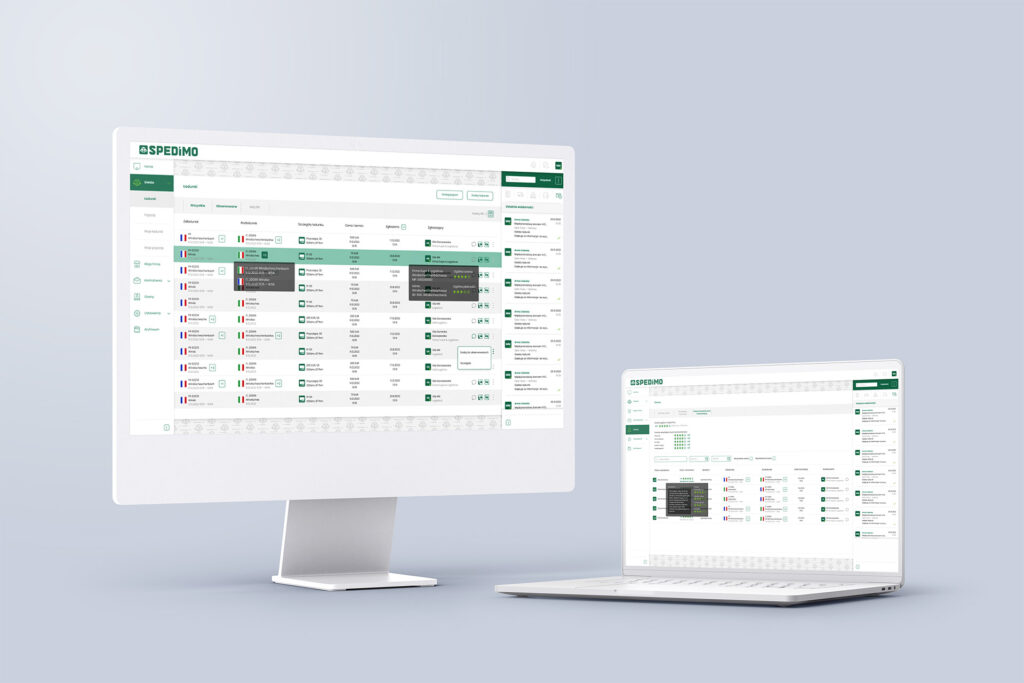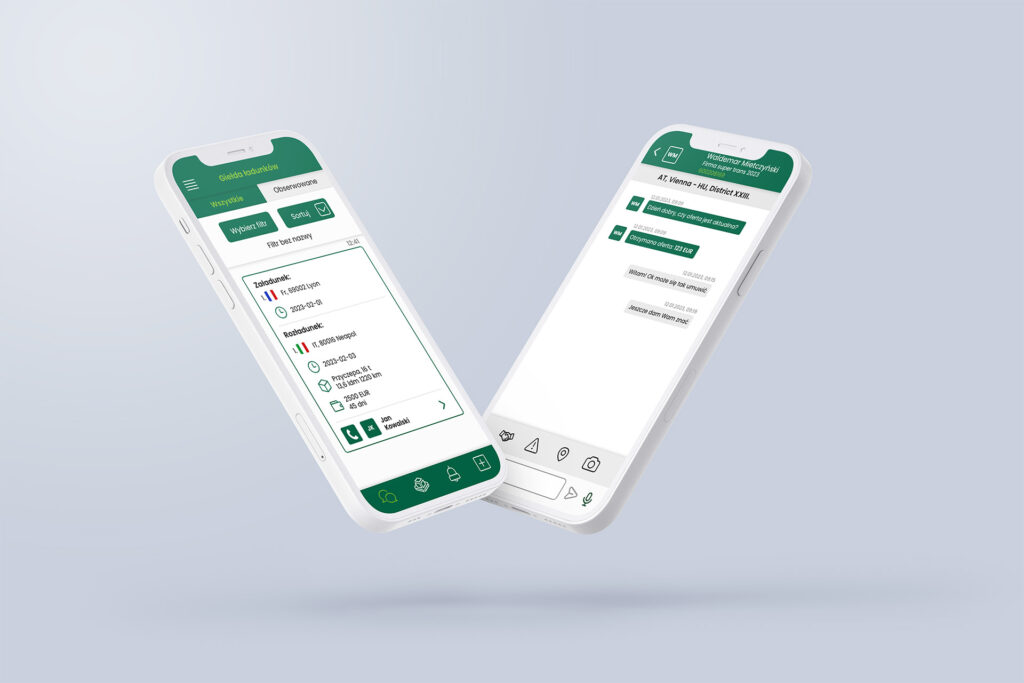Spedimo
Design and development of an intuitive transport exchange
How to design and build a transport exchange to perfectly meet users’ needs and disrupt the monopoly in the freight forwarding app market? Learn about the Spedimo case study, which undertook the task of creating a user-friendly solution for the highly monopolized freight forwarding and transportation market.
Introduction
Spedimo.eu is a transport exchange whose main task is to connect freight forwarding companies with sellers and streamline transport organization. Operating in the freight forwarding market for almost 25 years and observing the solutions of competitors, our client saw opportunities to capture part of the market by improving the functionality of existing solutions. They approached us with the task of designing and building a new transport exchange from scratch.
Spedimo’s goal was to create a platform that enables transactions to be made quickly and easily. During market analysis, the client noticed that existing solutions in the logistics and freight forwarding field are often too complex for the needs of the smaller and less-than-truckload transportation niche, as they are designed for the entire market. For example, they require users to provide detailed and often unnecessary information, which lengthens and complicates the transaction process. Therefore, the client decided to focus on a narrower target group (the smaller and less-than-truckload transportation niche) and create a solution that precisely addresses the needs of small freight brokers.
During the process of defining and developing the idea, the client used the largest market players as benchmarks and focused on improving the functionalities they offered from the perspective of users representing the chosen market segment. They decided to build an ergonomic, reliable, intuitive platform equipped only with key functionalities, thus shortening the transaction process as much as possible.

Needs analysis and solution design
As a technological partner with experience in the field of freight forwarding, logistics, transportation, vehicle tracking, and delivering projects of such scale, we willingly entered into collaboration with Spedimo.
We started the project by creating a Business Model Canvas, which helped us refine target groups, clearly define their needs and expectations, and create a list of problems that the new application would solve. We also set a goal: we deemed the project a success if 10,000 users posting 6,000 orders per day and receiving 100,000 offers would work on a stable, fast-working platform.
In the next step, we conducted a thorough analysis of the solutions offered by the largest market players in our client’s industry. During Discovery Workshop workshops, using the Event Storming method, we mapped out the functionalities of their platforms point by point and helped the client select those that are most crucial for users in their niche.
Ultimately, we established that from a functional and business perspective, the new platform should:
- enable quick transactions directly in the application
- facilitate efficient management of hundreds of offers and transaction proposals without the need to provide detailed order parameters
- provide fast and convenient communication between market participants: freight forwarders, logistics departments, and drivers
- allow for efficient management of individual elements, e.g., cargo sales, exchange of information and documentation between users
- serve as the main communication channel between parties and provide a secure way to make agreements regarding order fulfillment
- have an intuitive interface and provide excellent UX
- operate in both web and mobile versions.
In the final phase of this stage, we also supported the client in the business and marketing process of introducing the product to the market. We provided them with a list of tasks to be completed before launching the final version of the application and helped them estimate the profitability of the chosen business model.
Selection of functionalities
To achieve the set goals, we focused on building and implementing the following functionalities:
- Creating an engine that adapts to the needs based on continuous analysis and parameterization.
- Module for adding loads, vehicles and searching for them
- Development of an advanced mechanism providing filtering options based on various parameters (e.g., distance, loading and unloading locations)
- Implementation of Helpdesk and customer service support office, which deals with verifying companies, checking the validity of permits and licenses, solving technical problems, managing ratings, or blocking accounts at the request of the debt collection department.
- Provision of a legal support module and dispute resolution, mediation, and debt collection.
- Implementation of a functional chat allowing the opening of separate threads for each order, as well as attaching photos, videos, audio files, and sharing locations.
- Building a rating and review mechanism for other users and counterparties.
We also equipped the built system with additional modules supporting its functionality, such as the company management module, multilingualism, or GDPR compliance.

Technological Solutions
We based the platform project on an ecosystem consisting of 4 environments and 3 virtual servers, which allowed us to create test accounts for us and the client, production, integration sandbox, and integrational API. We conducted the project using Azure DevOps, which housed the code repository.
In the project, we used the following technologies:
- Front-end: Vue.js
- Back-end: .NET
- Mobile version: Flutter
- Ensuring smooth server communication with the front-end layer, crucial especially for chat handling: SignalR
- Database and designing the system for the search function necessary for basic platform functionality.
We based the application engine on the architecture of a modular monolith, which allows for modular development of the application based on predefined business logic. A team of 9 people, consisting of a Project Manager, 6 developers, a tester, and a UI/UX specialist, worked on the project in total.
Effect
The platform project was successful:
- We managed to create an interesting engine that not only allowed for the implementation of all planned functionalities but also ensured high responsiveness and speed of operation;
- We built a system that works smoothly, without stalls, lags, or bugs, and prepared it for reliable operation with a number of users exceeding the initial assumptions – we conducted load tests using Azure Load Testing under conditions assuming 200,000 active orders;
As a result of a series of optimizations and iterations, we were able to reduce the loading time from 1.35s to 0.8s, thus solving the issues that users of competitor solutions have been facing. In this way, we achieved the main goal: we delivered a much faster, easier-to-use, and user-friendly platform ready to handle significant traffic and offering significant scalability options.
Interested in exploring and testing our platform? Visit Spedimo.eu
Interested in undertaking a similar project?
Tell us what you need – our experts will tell you how to do it, how much it costs, and when it will be ready.